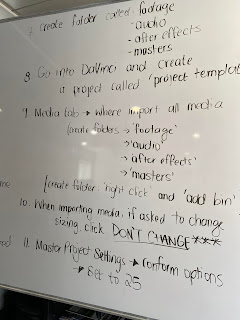CREATIVE CRITICAL REFLECTION
Question 1
How does your product USE or CHALLENGE conventions?
(Think sound, lighting, narrative structure, editing, camera work, symbolism and iconography)
- make a list of conventions used, are they conforming to the norm or challenging the normal thriller conventions?
Question 2
How does your product engage with audiences and how would you distribute your film as a real media text? (here's some info on film distribution for you to research)
https://www.rev.com/blog/indie-film-distribution
- Think about and comment on the following;
- characters (what characters did you choose to use? Can audiences identify with any of them? Are they scary / mysterious? Is there a vulnerable character that the audience sympathises with?
- narrative - what sort of story line does your film have? Think about narrative structure - are there certain aspects of the story that are revealed at the end? Is there enigma in your story? Is there a cliffhanger?
- point of view - is your film made from a certain point of view?
- How does the thriller genre in general 'hook' or engage audiences? (do a bit of research)
- What editing/ music choices have you used to build suspense and engage audiences?
Question 3
How have your PRODUCTION skills developed throughout the project? (pre-production, production and post-production. What have you learnt to do?
- comment on the learning process. What did you find hard? What did you enjoy doing? What was a challenge and
- what were peer revision/ comments on your rough edit? What did they suggest you change? What did you end up changing?
- what went well in the filming process that you'll do again? What will you do differently next time?
Question 4
How did you integrate technologies into this project?
(Software, hardware and online)
- Photos! List photos, screenshots, videos and explanations of every website, software, Youtube tutorial, camera, sound gear/ microphone etc, you used to plan, write scripts, look up info on sound effects, convert Youtube music to MP3's, edit, after effects etc




